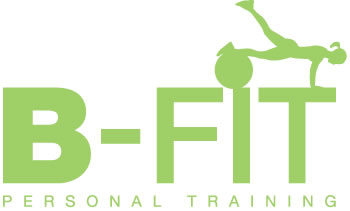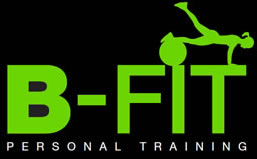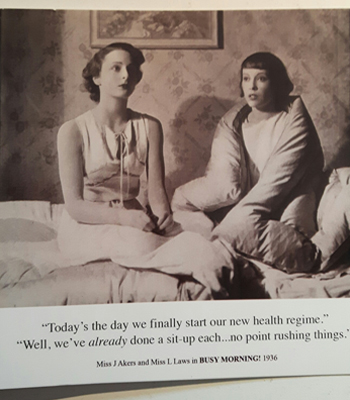I want you to take a moment to reflect on how your nan — or even even your great-grandmother — used to eat, move and live. A time when there were no trendy health apps, faddy diets or packaged ‘health’ snacks. Your nan inherently possessed a simple and nourishing way of feeding herself and her family and it didn’t include anything that resembles the use of ultra-processed or convenience-driven products that are abundant in the world today. So, I say it’s time we start reclaiming some of her wisdom for our own overall health’s sake, because you might be shocked to discover that your nan’s traditional lifestyle could hold the secrets to restoring your metabolism, energy and overall wellbeing!
So, let’s explore how women just a couple generations ago lived — and why bringing those ancestral practices back into your life could be the key to the health transformation you didn’t even know you needed.
She Never Obsessed—She Just Lived
For vast majority of human history (basically up until about 80 years ago when supermarkets became a thing), people didn’t buy fitness trackers or count calories, and neither did your nan. Health wasn’t something she chased or forced. It was something she lived. She also moved her body with purpose, ate real organic food that was grown naturally and without pesticides, spent a lot of her time outdoors in nature and respected the natural rhythms of life. Your nan grew up eating meals that were created from scratch. They were made with love from whole ingredients and she didn’t have the stress of worrying about nutrition labels, which superfoods to add or if she was getting the right amount of protein. In fact, your nan likely had more metabolic resilience and hormonal balance than most women do today.
The modern life that we’ve all become accustomed to has introduced ultra-processed foods, toxicity overload from the soil, sea and air, as well as artificial lighting and sedentary habits. The result of these conditions, which would have been alien to your nan, means we now have an epidemic of burnout, insulin resistance, autoimmune issues, hormonal imbalances, declining energy levels and seemingly uncontrollable weight gain — especially in women of perimenopausal and menopausal age, who seem to obsess about their bodies now more than ever.
The decline in nutrient-dense eating didn’t happen overnight. As I mentioned before, the introduction of supermarkets hasn’t helped our cause, but it began with the industrialisation of food processes, which began about 150 years ago. All of a sudden, our food wasn’t grown or raised near our home. Instead, it became processed, packaged and — not long after — stripped of its vital nutrients while chemicals were added to give it a better taste.
What changed? Well, nourishing animal fats were replaced by refined seed oils, organ meats and bone broths completely disappeared off the dinner menu, soaked grains and ferments were abandoned in favour of bleached flour, fruit sugars and homemade desserts gave way to glucose-fructose syrup (aka high-fructose corn syrup) and toxic, chemically-laden artificial sweeteners like aspartame, acesulfame K and even white stevia. Your nan would have thought that an added protein, low-fat, microwaveable meal was bizarre — and she’d be right.
The traditional diet that your nan valued included the whole animal’, which also meant the liver, kidneys, heart, bone marrow, skin and connective tissues — foods most of us have never even tasted. These nose-to-tail parts of the animal were once considered as prized sources of nourishment, because they’re rich in vitamin A, D and K2, glycine and collagen (so she didn’t need to take supplements for this) and saturated fat (yes, there is such a thing as healthy saturated fat — please read my blog Fat Chance to find out more!). By contrast, today’s focus on boneless and skinless chicken breast (which have also been pumped full of hormones to grow faster, if they’re not organic!) and low-fat everything has robbed women — especially those of us in midlife — of the very nutrients that support proper hormone production, skin elasticity and bone density. And that’s before I even mention the modern reliance on seed oils like rapeseed, soybean, sunflower and corn oils. These oils are not only inflammatory, but they suppress your metabolic rate and interfere with your blood sugar levels. Your nan cooked with butter, lard and beef tallow before they were demonised by science propaganda — the very fats that actually support, rather than harm, your hormonal health.
Carbs Weren’t Her Enemy
I bet you may even remember your nan baking bread or pies in her kitchen. Close your eyes and I bet your can even recall the smell. Well, here’s a surprise (not!): your nan ate carbs — and lots of them. However, the carbs she ate were not the kind that are found in cereal boxes or vending machines. The carbs your nan ate regularly were organic and non-processed potatoes, carrots, beets and squashes that were staples for most of the year-round. Then during the summer and autumn, she consumed seasonal fruits like apples, pears and many varieties of berries. And her breads were prepared with proper sourdough grains, while her oats were soaked. These foods provided the glucose she needed for energy, the fibre that contributed to her digestion (with no IBS or Crohn’s) and nutrients for her fertility and thyroid function. And they were always cooked, fermented or preserved in ways that boosted her nutrient absorption and gut health even further.
So, instead of veto diets or extreme carb restriction, your nan simply ate balanced meals — that included a substantial amount of carbs — throughout her reproductive years and into her menopause. Her meals were substantial, satisfying and filled with real fats, proteins and carbs. So, she didn’t need to carry around protein shakes or granola bars in her handbag. She didn’t need apps to count her macros or intermittent fasting windows. She ate when she was hungry and cooked with what was available in tune with the seasons. Compare that to today: constant grazing of ultra-processed snack foods, eating ‘on the run’, low-calorie meal replacements and stress-fuelled skipping of meals. It’s no wonder many women are already feeling utterly depleted by the time they hit perimenopause!
And She Moved — Outside!
I’m always stressing to my lovely clients that you don’t actually need a gym membership in order to be active. You simply need a lifestyle that includes movement, just like your nan did! Besides eating nutritionally dense homegrown food, your grandmother also moved constantly — walking to the market, kneading bread, sweeping dust from the house, doing the gardening/growing food, lifting her children, as well as a host of other chores. This kind of daily, low-intensity activity is a metabolically supportive exercise, especially for women in midlife.
She also spent time outdoors, which meant that sunlight was once her healthy companion. Your nan hung laundry, walked to town, worked in the garden — all without worrying about lathering chemically-laden sunscreen on her skin or how having anxiety because of all the screen time spent doomscrolliing. Why does this matter? Because sunlight sets your circadian rhythm, which regulates your sleep and hormones. It also boosts vitamin D, which is essential for lifting your mood, bones and immunity, while infrared light from the sun fuels your mitochondria (your energy engines). Today, we live in artificial light, staring at bluelit screens and inside all day. No wonder our sleep suffers, our hormones crash and our energy plummets. Your body needs the sun to function well — just like it did for your nan.
The modern life we’ve been sold has us sitting for more than 10 hours a day and then trying to ‘fix it’ with 30 minutes of high-intensity workouts or hours on the treadmill. But this method often backfires in perimenopause, because it is a sure-fire way to promote adrenal burnout and further hormonal imbalance.Returning to your nan’s way of movement — like taking walks outside, doing a spot of gardening, gentle stretching or yoga, lifting natural objects — can gently help to rebuild your metabolic fire.
Taking tips from how your nan lived isn’t about trying to live like it’s 1905! But what we can do is reclaim the best parts of her ancestral wisdom, even when living in this modern world. She also knew that perimenopause and menopause weren’t (and still aren’t) diseases — they’re simply natural transitions, just like puberty. But in a world that works against your biology, it can feel like a battle. But remember, your nan didn’t fight her body. She supported it with real food, fresh air and restful nights. And if you value your health as much as I do, then you can do the same!!!
So, if you’re feeling overwhelmed with it all and need help with putting nan’s wisdom to work, then CLICK HERE or call/text me on 07748 298728 for a FREE confidential and no-obligation chat!!!
Love, Gaynor x




